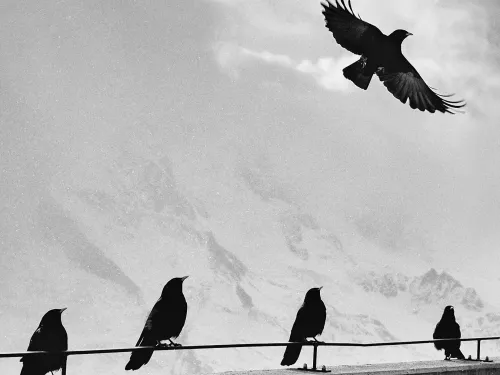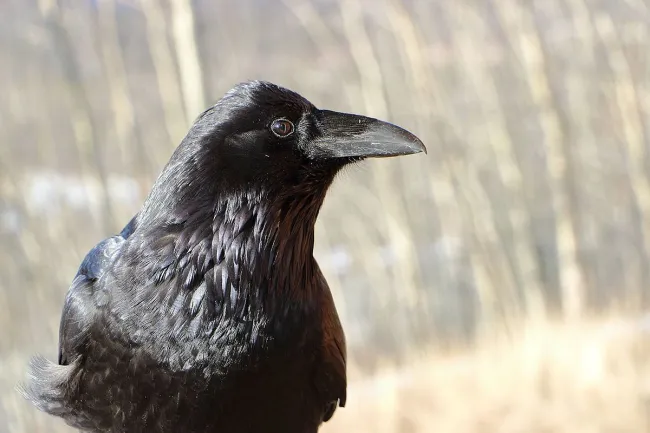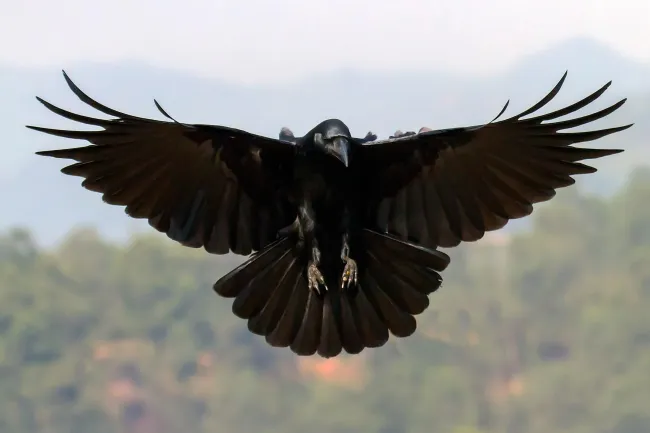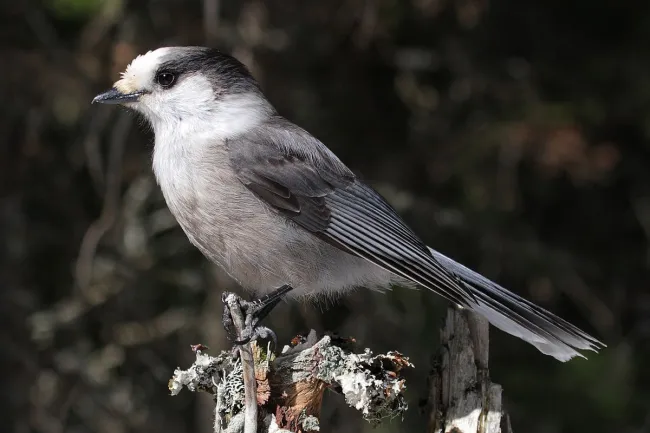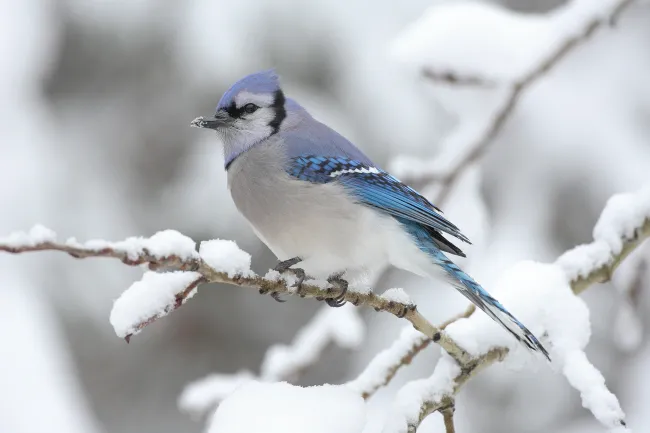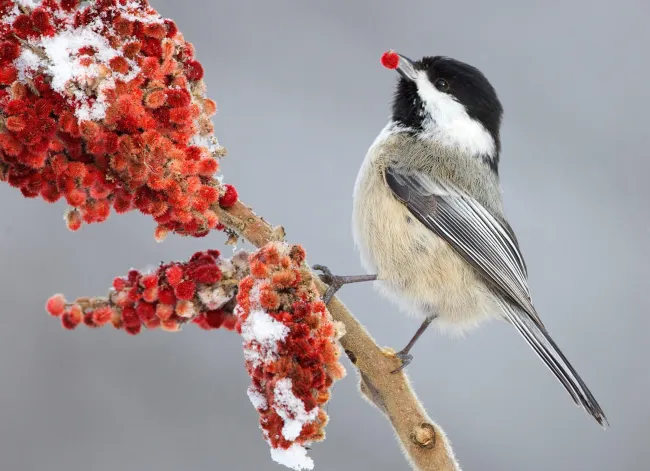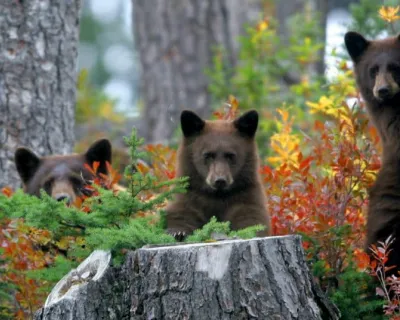Birds that brave the Canadian Winter
Bundled up with scarves, mitts, big jackets and toques you brave a walk through the winter landscape. Suddenly through the wool wrapped around your ears you hear a bird. Was it a caw, or a croaking sound? A squawk or a tweet? Is it tiny and fluffy? Blue? Grey? Or big, black and bold? Here’s a quick way to tell exactly what you are looking at or listening to.
Raven or crow?
Crows, like the raven, are scavengers, cleaning up after everything from road-kill to debris cast from jerks who don’t look for trash bins. But how do you tell the two apart? They are both shiny black with beady eyes and strong beaks.
Ravens are large and usually travel in mated pairs called an “unkindness” or a “conspiracy” of ravens. The tail when fanned out in flight is wedge or almost pointy shaped. In flight the raven has a more stable soaring style compared to its crow cousin. A dead give-away is the birds call. If it sounds like it is croaking – it’s a Raven. The lifespan of a Raven is over 20 years.
Have you ever stopped to watch a Raven work? They are brilliant problem solvers and are listed as one of the smartest animals. They are so smart that they are known to call wolves to a dead animal. Then wait for the wolves to open the carcass, leaving scraps for the ravens to enjoy.
Crows are smaller than the raven and usually travel in groups called a murder made up mostly of family members. Interestingly, the offspring from a previous nesting season will usually hang around and help raise the new nestlings. The tail when fanned out in flight is straight across the edge and only slightly rounded. When they are waddling across the parking lot, they do not hunch like a raven and don’t have fluffly feathers at the neck. The lifespan of a crow is eight years. Listen to that call again. If it’s a loud “CAW CAW,” it’s a crow.
These are the Jays we know
Jays are prevalent across the country and are not scavengers like the crows and ravens. These species like berries, seeds nuts, small rodents, eggs and conifer seeds. Of course, if you leave a lunch on a picnic table, that is fair game too.
Whiskeyjack, Grey, or Canadian Jay, its all the same jay found across the country. This species of songbird is smaller than other jays with medium grey back feathers with a lighter grey underside.
The head is mostly white with a dark gray hood. The plumage is thick to provide insulation for the cold winters. These clever birds make a “QUEE-OO” call but have two different calls when threatened from the air or ground. A series of harsh clicks signal a ground predator, a series of repeated whistles indicate a predator in the air.
find YOUR zen
Sign up for ZenSeekers enews for local culture & outdoor adventure across Western Canada.
Grey Jays, as Whiskeyjacks are also known, are “scatterhoarders” that save gooey wads of food under bark or tufts of lichen all over its habitat for winter. Like the chickadee, they like a handout but you are doing them a disservice. Let them forage on their own.
Being called a Whiskeyjack stems back to First Nations where the Wiseakedjak in Cree history was portrayed as being responsible for a great flood that destroyed the world. In other stories he is one of the beings that created this world.
Blue Jays are aptly named because they are predominately blue-backed with a white underside and while dots across the wings.
This large songbird is found across the country, but its habitat stops on the Alberta BC border or the eastern edge of the Rocky Mountains. It’s cousin the Steller’s Jay or Pine Jay with a dark grey or black head lives in BC.
Both these jays love the backyard feeder. These jays have a few different calls. The Blue Jay will make a short squawk like air being pushed from a balloon. The Steller’s Jay is somewhat harsher and sounds like a bunch of “Sheck-shek-shek-schek.”
Last but not least, the Chickadee
Just say Chickadee and you are saying the call of the Black Capped Chickadee found throughout most of Canada. These palm-sized troopers do not migrate like you’d assume they should.
To combat the cold winter night they lower their body temperature. Like the Whiskeyjack, they stash seeds and small insects to find later. They love a good handout but do them a favour and leave seeds to be taken from a feeder and not from your hand.
You will know them when you hear them gargle “Chick-a-dee-dee.” Their other call or whistle sounds like they are blaming their sister. Listen for something that sounds like “She-did-it! She-did-it!”
Get more Zen with nature
Read these stories for more ways to connect with nature and get outdoors.
